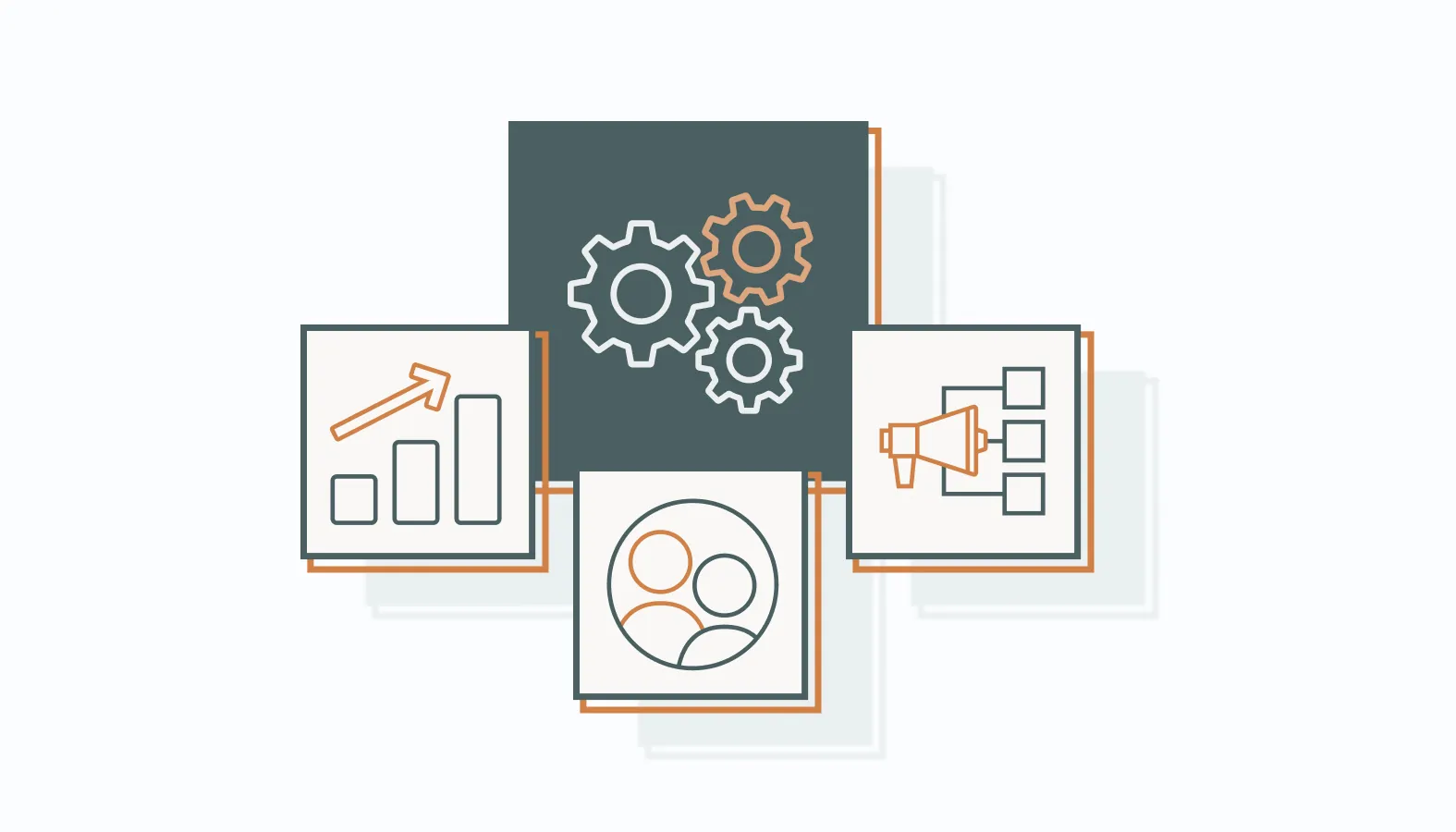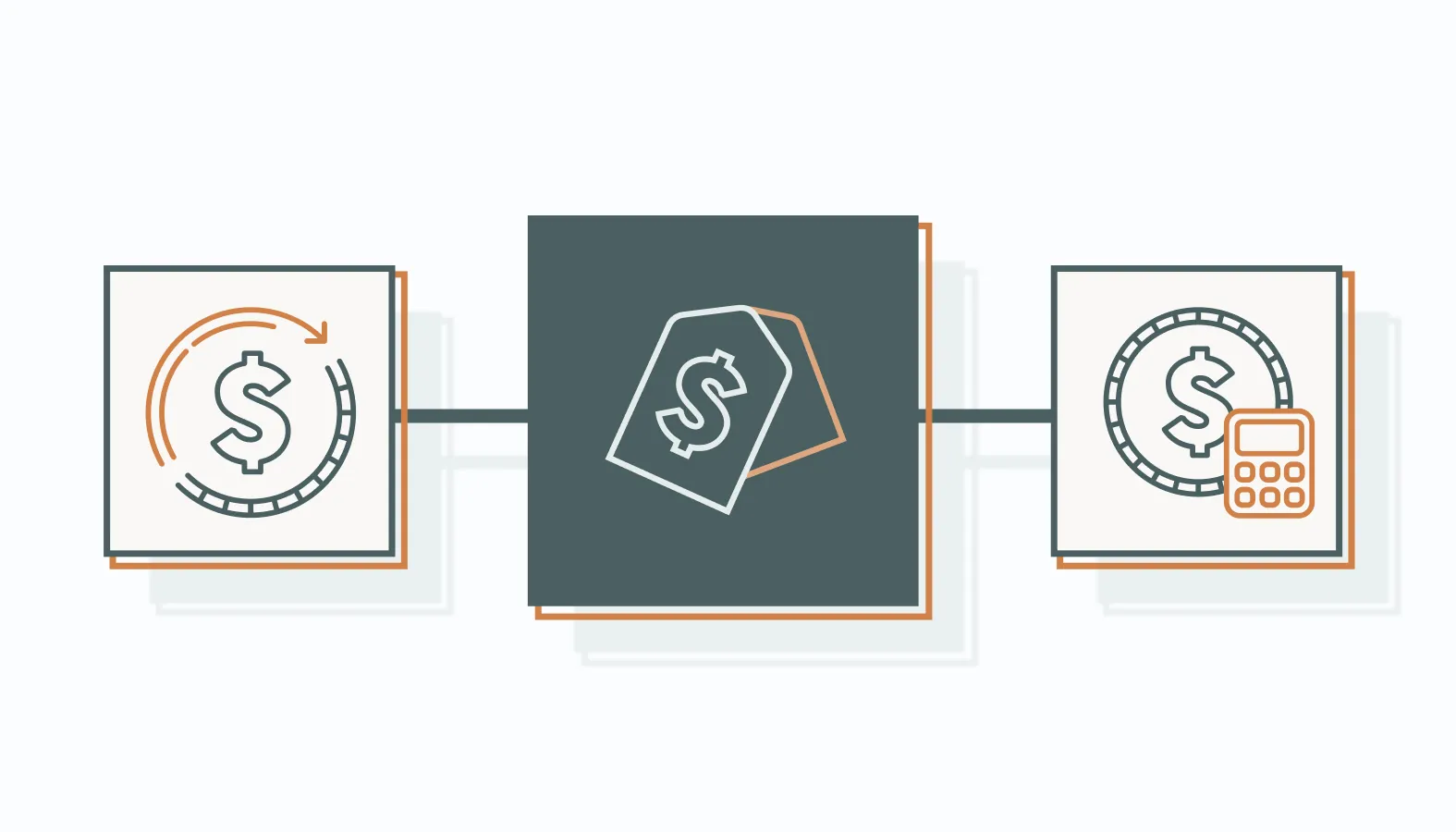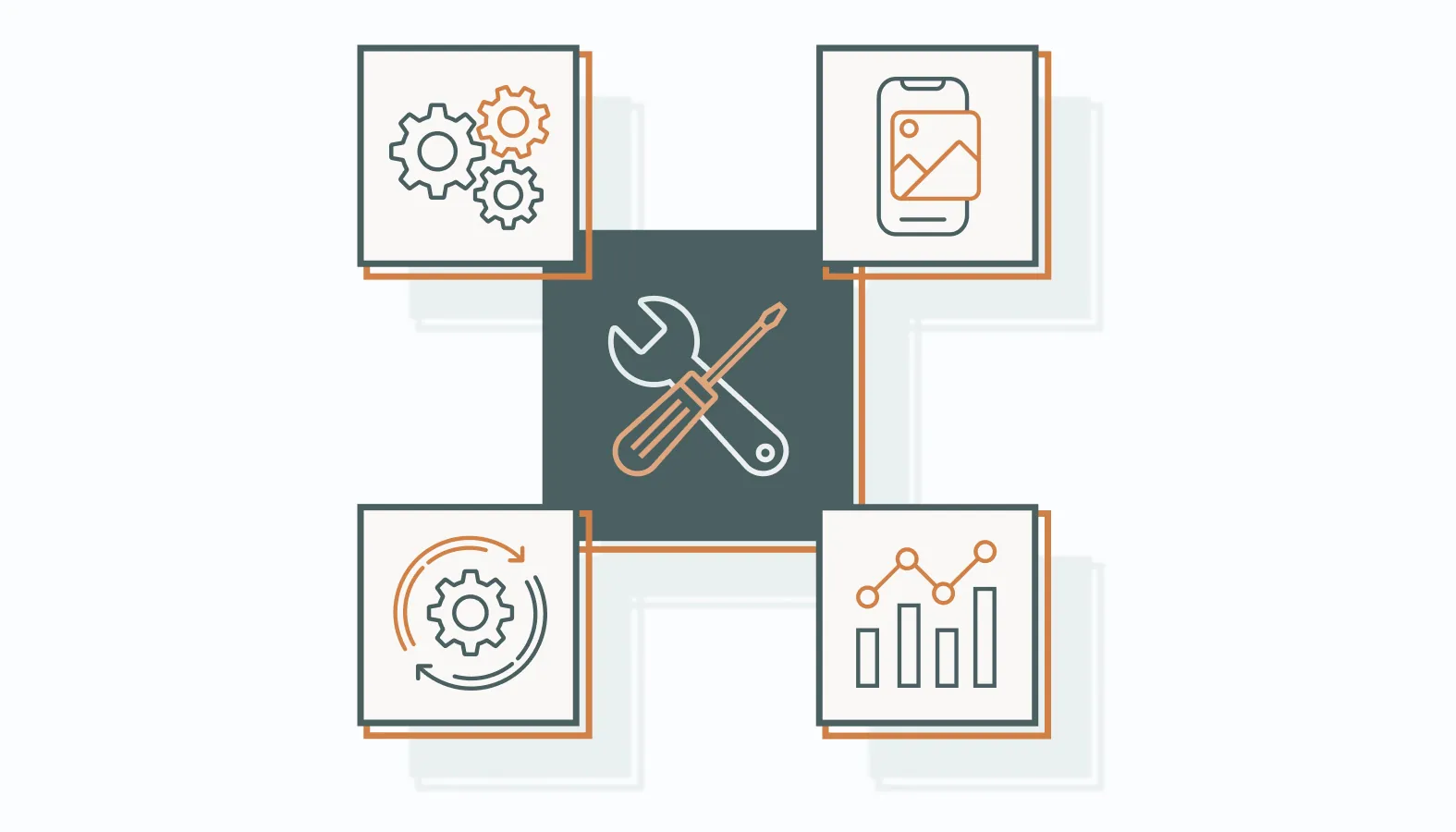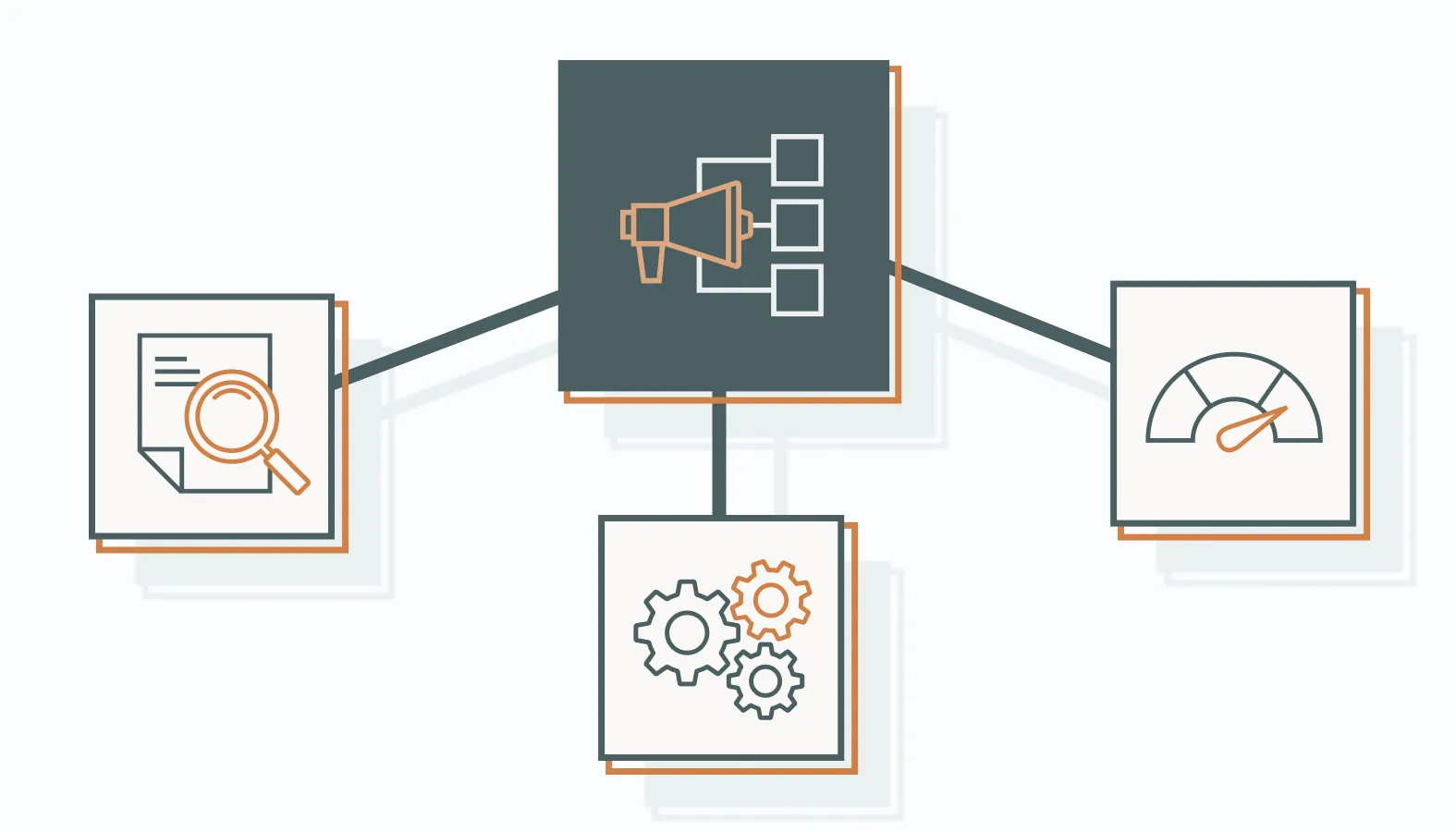Today’s SaaS marketers have more data, more channels, and more pressure than ever, yet many are still stuck doing things the hard way. Manual emails, scattered analytics, disconnected teams.
Sound familiar? SaaS marketing automation exists to fix exactly that.
Of course, automation isn’t magic. With hundreds of tools and pricing models on the market, it’s easy to feel stuck or overwhelmed. And if your systems don’t talk to each other? That’s a recipe for frustration.
This guide walks you through the tools, tactics, and ROI of SaaS marketing automation so you can make confident, informed choices and actually see the payoff.
Unlock the Full Potential of SaaS Marketing Automation
Digital marketing moves fast, and SaaS companies that thrive know how to work smarter.
Marketing automation turns routine outreach into a streamlined, data-driven engine that drives results while your team focuses on strategy. It is more than just convenience. Done right, it expands your reach, increases efficiency, and fuels measurable growth.
Get the Basics
SaaS marketing automation uses software to handle repetitive marketing tasks like email campaigns, social posting, and ad management. Once configured, it delivers messages to the right audience at the right moment with precision and consistency.
The benefit is more than saved time. Automation ensures accuracy and frees up resources to focus on high-impact initiatives.
Why It Matters for Your SaaS Business
For SaaS companies, automation is a direct path to operational efficiency and competitive advantage. It removes the drag of manual work, unlocking bandwidth for innovation and strategic planning.
The data it produces offers clear insights into audience behavior, helping refine campaigns and personalize customer experiences.
In a crowded, fast-moving market, SaaS marketing automation becomes less of an optional tool and more of a growth accelerator.
Reap the Rewards of SaaS Marketing Automation
In the competitive SaaS arena, speed and precision separate leaders from followers.
Marketing automation gives your business both, turning everyday processes into a synchronized system that fuels productivity, enhances customer interactions, and unites sales and marketing efforts.
Boost Efficiency and Productivity
Automation works quietly in the background, streamlining workflows and taking repetitive tasks off your team’s plate.
Email campaigns, social scheduling, and lead nurturing run consistently without manual oversight, reducing errors and protecting valuable time.
With the operational grind handled, your team can focus on strategic projects that drive growth.
Elevate Customer Experience and Engagement
Personalized experiences turn casual users into loyal customers.
Marketing automation makes this possible by segmenting audiences, timing outreach perfectly, and tailoring messages to individual behaviors.
From targeted follow-ups to dynamic content, customers receive the right interaction exactly when they need it, creating stronger connections and long-term loyalty.
Align Sales and Marketing Seamlessly
When sales and marketing operate in sync, revenue grows faster. Automation helps close the gap by scoring leads, sharing data instantly, and providing actionable insights.
Platforms like Salesforce and Pardot keep both teams informed and aligned, ensuring that sales receives qualified leads and marketing sees measurable impact. This coordination builds a unified approach to attracting and retaining customers.
Navigate Costs and Pricing Models for Marketing Automation
Investing in marketing automation takes more than a swipe of the credit card.
Choosing the right tool and pricing model can define whether it becomes a profit-driving asset or a budget drain. A sharp understanding of costs lets you lock in value without burning through resources.
Decipher Pricing Models
The pricing landscape can be a maze, but the right model keeps spending predictable and performance high.
Subscription-Based Models
Pay a recurring monthly or annual fee for software access, updates, and support.
Predictable costs make budgeting easier, but unused features can turn value into waste. This works best for companies with consistent needs and teams committed to using the full toolkit.
Usage-Based Pricing
Usage-based pricing charges companies based on their actual usage, which can be ideal for businesses with fluctuating demands. This model allows for cost savings when usage is low, but expenses can increase with higher utilization.
To manage costs effectively, businesses should closely monitor usage patterns and establish thresholds that align with budget constraints. Predictive analytics can be employed to forecast usage and prevent unexpected expenses.
Tiered Pricing
Tiered pricing provides scalability by offering different levels or packages based on feature sets or usage limits. This structure enables businesses to start with basic features and scale up as their needs grow.
When choosing the right tier, evaluate current requirements and anticipated growth. It’s crucial to balance the immediate cost with the potential need for advanced features in the future, ensuring that the choice supports long-term strategic goals.
Freemium Models
Freemium models allow businesses to access basic features at no cost, with the option to upgrade to premium, paid versions for enhanced capabilities. This approach can be particularly advantageous for startups and small businesses with limited budgets.
The strategic advantage lies in testing the tool’s effectiveness before committing to a paid plan. It’s an opportunity to gauge whether the tool fits the business needs and justifies further investment.
Plan Your Automation Budget
Smart budgeting covers both the upfront lift and the ongoing engine maintenance, ensuring that the investment delivers the expected return.
Initial Setup Costs
Initial setup costs can include expenses for software acquisition, installation, and employee training. Depending on the tool’s complexity, these costs can vary significantly.
To manage these expenses, consider phased implementation, where the tool is integrated in stages. This approach can help spread costs over time and allow teams to adapt better to new processes.
Ongoing Maintenance
Budgeting for ongoing maintenance is vital as it covers updates, support, and system enhancements. Regular updates ensure that your tools remain secure and efficient.
Common maintenance tasks include software updates, performance monitoring, and user training. Allocating funds for these activities is crucial for maintaining optimal tool performance and avoiding unexpected expenses.
Scaling Costs
As your business grows, so will your automation needs. Scaling costs can include additional licenses, increased data storage, and expanded feature usage.
To forecast these costs, analyze growth trends, and use predictive models to estimate future needs. This proactive approach can help in managing expenses and ensuring smooth scaling operations.
Return on Investment (ROI)
Measure success with metrics like lead conversions, acquisition costs, and revenue growth. Use data-driven reports and case studies to show stakeholders the tangible impact of automation, reinforcing its place in the budget.
Choose the Perfect Marketing Automation Tools
Picking the right marketing automation tool isn’t about following trends; it’s about locking in the tech that will move the revenue needle.
The best tools don’t just “support” your business; they supercharge strategy, sharpen operations, and make customer engagement effortless.
Here’s how to spot the keepers and which names are worth your shortlist.
Equip Your Business for Success
Some features aren’t “nice to have” — they’re mission-critical. Miss them, and you’re stuck with software that looks good in a demo but tanks in the field.
Integration Capabilities
A tool that plays well with your current stack is non-negotiable. Smooth integration means your data moves at the speed of your decisions, not your intern’s copy-paste skills.
CRM, email, and social platforms should sync like they were built together. Plugging into Salesforce or Shopify, for example, can eliminate silos and give customers a seamless ride from click to close.
User-Friendly Interface
If your team needs a three-day training just to send a campaign, the tool’s already costing you money.
Interfaces should be intuitive enough for new hires to use without babysitting, but powerful enough for pros to get granular. Think drag-and-drop editors, crystal-clear dashboards, and guidance baked into the workflow.
Customization Options
A rigid tool will strangle your process.
The smart move is picking one that bends without breaking, where workflows, reports, and permissions are all yours to mold. This flexibility means your system scales with you instead of becoming a speed bump when you grow.
Analytics and Reporting
Good instincts are fine; great data is better. They provide insights into campaign performance, customer behavior, and ROI.
Real-time analytics, customizable dashboards, and deep-dive reports turn raw numbers into actionable intel. You see what’s working, what’s tanking, and where to pivot before it’s too late.
Explore Top SaaS Tools
The marketing automation tool industry is crowded, but a few players have earned their spot at the table.
HubSpot
HubSpot is an all-in-one powerhouse that bundles marketing, sales, and service under one roof. Its free tier is surprisingly robust, integrations are clean, and the education library alone can level up your team. Ideal for small and mid-sized businesses wanting one login for everything.
Marketo
Built for serious automation. From lead scoring to complex nurture flows, Marketo thrives in scenarios where personalization meets scale. Perfect for businesses with ambitious growth plans and complex funnels.
Pardot
B2B-focused and laser-aligned with Salesforce. If lead generation, pipeline tracking, and ROI measurement are top priorities, Pardot brings precision. It’s especially lethal when sales and marketing teams need to share the same playbook.
ActiveCampaign
Streamlined but potent, especially in email marketing and journey mapping. Predictive sending, smart segmentation, and automation that doesn’t require a developer’s help. A go-to for startups and lean teams that still want sophisticated campaigns.
Successfully Implement Marketing Automation in SaaS
Rolling out marketing automation in a SaaS business takes precision. When the right tools align with your strategy, the result is a faster, smarter, and more scalable operation.
Here’s how to make it happen without losing momentum.
1) Evaluate Your Business Needs
Before flipping the switch, know exactly what you want automation to achieve. The wrong tool can slow you down, so clarity is your first weapon.
Start with a full needs analysis using methods like SWOT analysis (Strengths, Weaknesses, Opportunities, Threats) to spot high-impact opportunities.
Pair that with input from stakeholders and real customer feedback to uncover where automation can cut friction, speed processes, and amplify results.
2) Define Workflows and Integrations
Automation runs on clean, efficient workflows. Map them out before you plug in the tech.
Key workflows worth automating include lead nurturing, onboarding, and campaign delivery. For instance, an automated nurture sequence ensures timely, relevant follow-ups without dropping leads mid-funnel.
Integrations are just as critical. Syncing your CRM with your automation platform keeps every team working with real-time data, eliminating silos and outdated info.
3) Monitor and Optimize Continuously
Automation only works if it keeps up with your goals. That means constant oversight.
Set up regular audits, run A/B tests, and track key metrics to refine your approach. Use analytics to see exactly how customers interact with campaigns and pivot fast when something underperforms.
Overcome Common Challenges and Find Solutions
Marketing automation is a growth engine, but it’s not without its speed bumps. Here’s how to handle the big four challenges proactively.
The Risk of Over-Automation
Automation accelerates processes, but push it too far and you lose the human connection that drives loyalty.
The fix: balance. Match automation depth to task complexity and the need for personal interaction. Quick replies to FAQs? Automate them. High-value leads? Keep it human.
Run regular process audits and gather feedback to ensure automation amplifies (not erases) the personal touch.
The Challenge of Ensuring Engagement
Automation can fuel engagement, but only if it feels real. The trap is letting interactions become robotic.
Use CRM and analytics tools to watch engagement trends in real time. Pair those insights with A/B testing and personalization to keep communication sharp and relevant.
Review open rates, click-throughs, and other key metrics to spot gaps early and keep your audience leaning in.
The Complexity of System Integration
Automation is only as strong as its connections. Poor integration creates silos and slows momentum.
Start by auditing your current systems, then identify the integrations that will have the biggest impact: CRM and e-commerce platforms usually top the list.
To keep things smooth, roll out integrations in phases, starting with simpler systems before tackling mission-critical platforms.
The Problem of Poor Data Quality
Bad data kills good automation. Inaccuracy leads to missteps, missed opportunities, and wasted spend.
Protect your workflows with regular audits, strict entry protocols, and automated data-cleaning tools.
With clean, up-to-date data, every automated action is precise, relevant, and ROI-positive.
By tackling these challenges head-on, you transform automation from a tool into a competitive advantage: one that’s scalable, sustainable, and impossible to ignore.
The Final Word: Automate, Innovate, and Lead
Look, in the world of SaaS, you’re either moving forward or getting left behind. Manual workflows and disconnected data are not a sustainable strategy. This guide was built to show you how marketing automation can be the core engine that will drive your business forward.
Automation isn’t about just using a few tools; it’s a strategic shift. By automating repetitive tasks, your team is freed up to focus on what matters most: creativity, strategy, and innovation. This creates more than just efficiency; it creates a dynamic, future-ready business.
We covered the critical areas:
- Boosted Efficiency: Automating the routine tasks means your team gets to focus on high-impact work.
- Personalized Engagement: Tailored messaging and data-driven insights create genuine connections with customers, turning transactions into lasting relationships.
- Seamless Alignment: When sales and marketing are united by a single, automated system, they move as one to drive revenue and a consistent customer journey.
- Smart Investment: Navigating pricing models and budgets turns your automation tools into a profit-driving asset, not a budget sinkhole.
- Future-Ready Strategy: Staying ahead of the curve with AI and advanced analytics is how you maintain a competitive advantage in a market that never stops evolving.
The future of SaaS marketing is automated. Those who recognize this and implement it correctly won’t just keep up; they’ll lead.
It’s time to build a marketing engine that doesn’t just work harder, but works smarter. The tools are here, the blueprint is in your hands, and the payoff is a sustained competitive advantage that others can only chase. But if you want to build a high-performing marketing engine the right way, schedule a call with one of our automation experts to get started.










